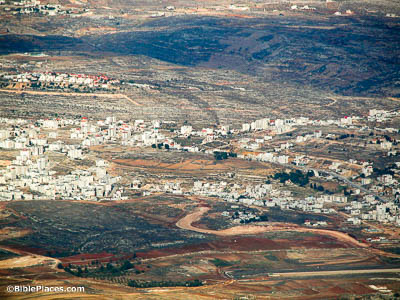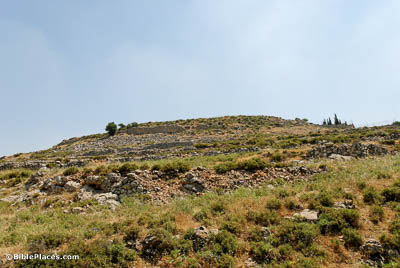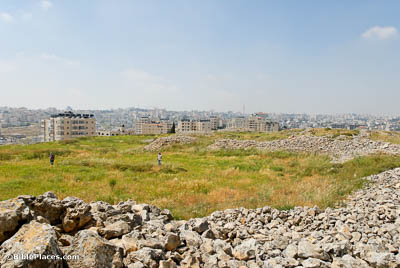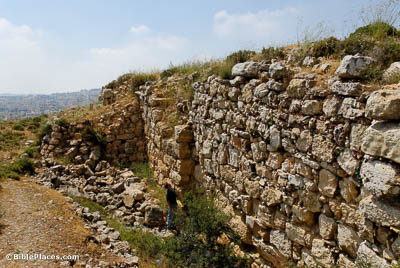Mizpah

Many "Mizpahs" in the Bible
The Identification of Mizpah


Mizpah in the Time of the Judges
Mizpah served as the rendezvous point for the tribes massing to fight against the men of Benjamin following the rape of the concubine (Judg 20:1-3). The men of Israel took an oath in Mizpah to not allow their daughters to marry a Benjamite (Judg 21:1). Mizpah was also the location of a national assembly where “all Israel” came before Samuel and repented (1 Sam 7). Immediately following this, God routed the Philistines from Mizpah down the Beth Horon Ridge route. It is possible that the tabernacle was here when Samuel offered the sacrifices. Later, acquiescing to the demands of the Israelites, Samuel selected a king to lead them at Mizpah (1 Sam 10:17).
A Well-Preserved Offset-Inset Wall
This offset-inset wall was constructed in the Iron II period and is believed by some to be associated with Asa’s fortification of the city (1 Kgs 15:22). The entire length of the wall was revealed in the excavations, a length of 2,100 feet (660 m), including eleven towers that were built along the exterior face of the wall. The wall is believed to have originally been 38–45 feet (12–14 m) tall.


Download all of our Samaria and the Center photos!
$ 39.00 $ 49.99 FREE SHIPPING
Related Websites
Mizpah (BibleAtlas.org) Includes a map and a good encyclopedia article, along with a list of where Mizpah is mentioned in Scripture.
Mizpah: Its Role and Significance in Biblical History (Divine Narratives) A text-only review of the importance of this site.
Understanding Mizpah in the Bible (Biblical Definitions) This is a comprehensive look at Mizpah; one of the highlights is a 3-minute video at historical origins of Mizpah.
Mizpeh or Mizpah (Jewish Virtual Library) This helpful article gives a full review of Mizpah in the Bible, including a reference from 1 Maccabees.
Mizpah (Abarim Publications) A deep-dive into the etymology of the name.
Mizpah, Mizpah Wherefore Art Thou Mizpah? (Bible History Daily) This 2008 article looks at the difficulties in identifying Mizpah in some depth.
Uncovering the Bible’s Buried Cities: Mizpah (Armstrong Institute of Biblical Archaeology) A 2019 article about the ongoing excavations at Tell en-Nasbeh.
Biblical City: Mizpah (YouTube) This 2-minute video is simple but helpful.